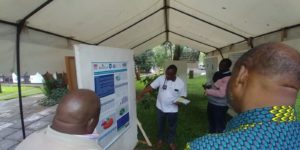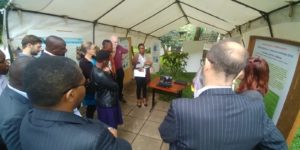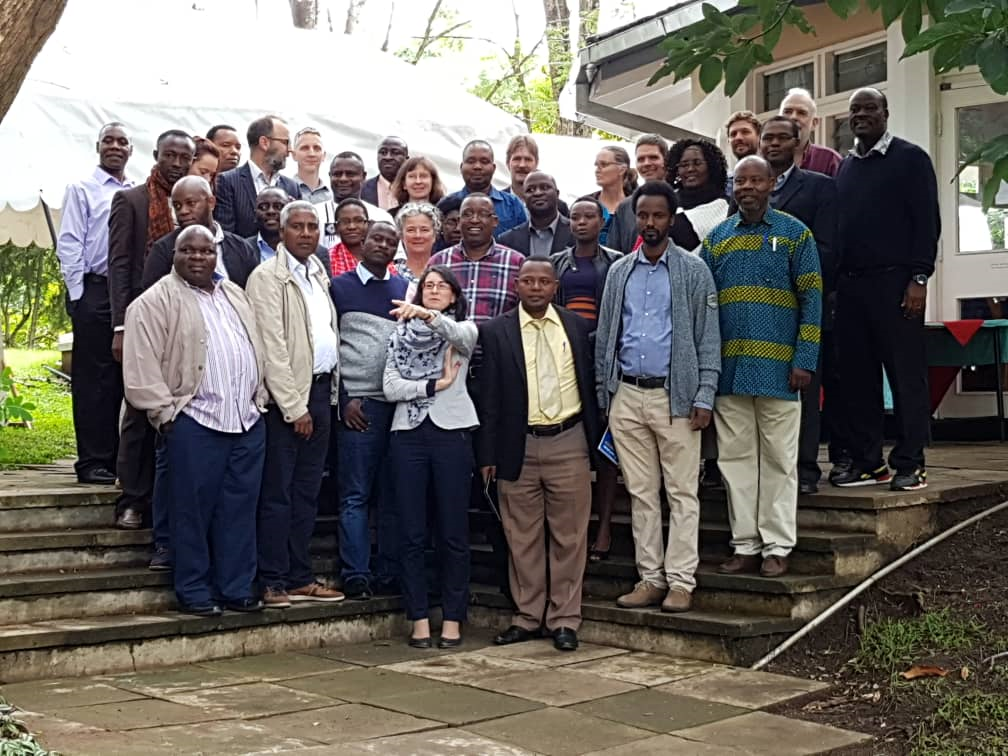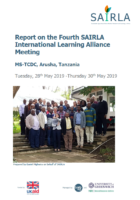
During the fourth International Learning Alliance workshop in Tanzania, members from SAIRLA research projects and National Learning Alliances were invited to share their lessons and experiences and share key findings and tools.
Three research projects and one NLA presented on the theme of trade-offs under which the SAIRLA programme is exploring how the economic, social and environmental trade-offs associated with sustainable agricultural intensification (SAI) can be managed.
Here we summarise the presentations and highlight the key discussion points from the plenary that followed.
Zambia NLA: Sustainable Agriculture Intensification Trade-Offs- Case of Zambia
The Zambia NLA is facilitating stakeholders to engage with evidence and tools on SAI in Zambia. SAI has been mostly been promoted to smallholder farmers through projects such as the Conservation Agricultural project. The NLA conducted a participatory activity developed using a social learning approach to gather perspectives from various stakeholders on the synergies and trade-offs of the various SAI practices – at the village/community level with farmers, then at the district/provincial level with the private sector, CSOs, public sector and farmers. Among their findings, they discovered that:
- All stakeholders had a limited conceptualisation of SAI in relation to landscape sustainability and livelihood systems because different stakeholders and projects have chosen some components of SAI over others.
- SAI has both positive and negative influences on all trade-off domains
- Nearly all stakeholders report positive results of SAI that contradict actual practices
SITAM’s research focuses on supporting smallholder farmer’s decision making in managing the trade-offs for SAI. The presentation focused on how smallholder farmers manage the trade-offs between production, sustainability and other socioeconomic and environmental factors. The research project uses a trade-off domains model (adopted from USAID’s Sustainable Intensification Assessment Framework) that takes into consideration issues of productivity, economic, environmental, human and social factors and are mapped against the different trade-offs and management strategies as identified by farmers in each of the research focal countries (Burkina Faso, Ghana and Malawi). Emerging messages from the research include:
- Farmers manage trade-offs through a diversification of farm management and livelihood strategies
- Some unsuitable farming practices (such as burning of fields, irresponsible use of agrochemicals) need to be avoided but systems level support is needed to encourage pro-sustainable alternatives. So far, development interventions have pushed specific technologies.
The project uses the CLEANED R tool to help model the environmental impact of transforming livestock value chains. It combines open access GIS data with participatory modeling to develop a quick but ‘good enough’ context specific environmental impact assessment for decision makers.
Among the lessons the project has learned:
- In Burkino Faso: Crop farmers and pastoralists can co-exist in peace
- In Tanzania: Improved cattle fed with bran, oil seed cake and locally produced fodder will reduce pressure on land – at the cost of buying staple food from elsewhere.
- In Ethiopia: Meat and milk production can be increased without increasing the environmental impact from livestock.
The overarching goal of the project is to influence policy and practice that are expected to culminate in: uptake of contextually appropriate SAI interventions with corresponding increases in food security among small holder farmers and urban and rural consumers in Ethiopia, Tanzania and Zambia.
The participatory trade off activity was designed to facilitate discussion around various trade-offs and synergies and identify what is needed to help overcome constraints. A multi-dimensional tool (TOA-MD) was used to assess climate change and adaptation strategies and their impacts on livelihoods. The results from these (along with other SAI data) are stored and shared via the SAI Dashboard and presented in a way which is easy and quick to understand.
During the plenary, participants were asked two questions:
- What is your main observation regarding trade-offs in relation to SAI in Sub-Saharan Africa?
- What is your main observation on how to engage policy and investment processes on trade-offs?




 ILA 2019: Trade-offs thematic group plenary discussion
ILA 2019: Trade-offs thematic group plenary discussion 